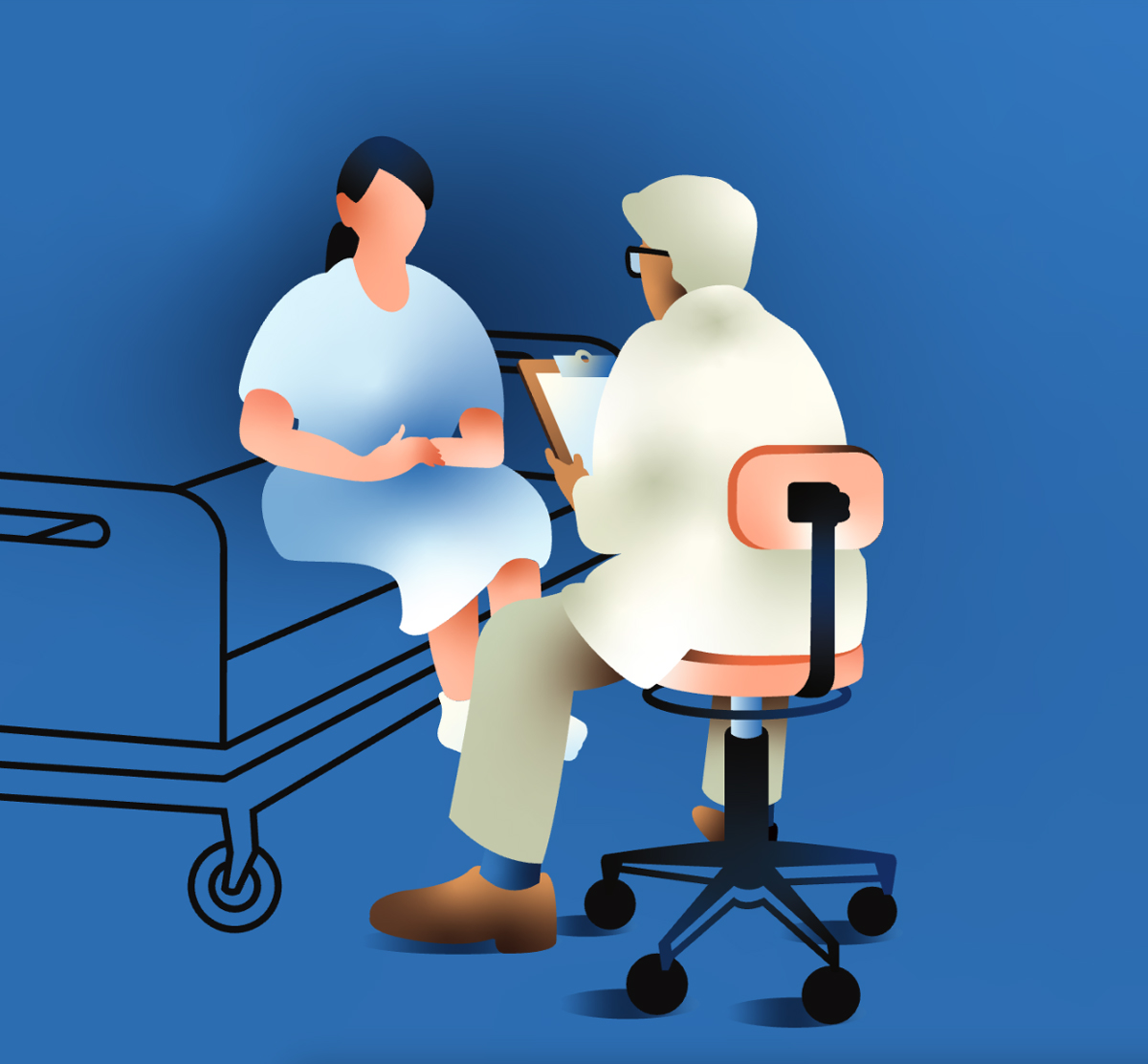When Doctors Sit, Patients Feel Better
Adding a chair in hospital rooms works wonders.

A bedside chat with doctors makes patients feel that they understand their conditions better. Danielle Lamberson Philipp
A new study indicates that when a doctor sits in a chair during hospital bedside discussions, it improves the experience for both physicians and patients.
Past studies have shown that when doctors sit next to a patient’s bed, it promotes eye contact and makes patients feel that they understand their conditions better and believe that their clinician is spending more time with them. However, many hospitals don’t have spare chairs in patient rooms.
Blair Golden, an assistant professor of medicine at the UW School of Medicine and Public Health, led a research team that studied four internal medicine units at Johns Hopkins Hospital in Baltimore. In two units, they installed a wall-mounted folding chair at the entrance to patient rooms and educated physicians on the value of sitting during patient interactions. In the other two units, physicians were simply educated on the value of sitting during interactions.
The study showed that education alone improved sitting frequency by 15 percent, but that adding dedicated chairs for the clinicians improved sitting by 45 percent.
“It was remarkable to see how such a simple action increased an activity that we know can lead to better patient care,” Golden says.
Published in the Fall 2024 issue


Comments
No comments posted yet.